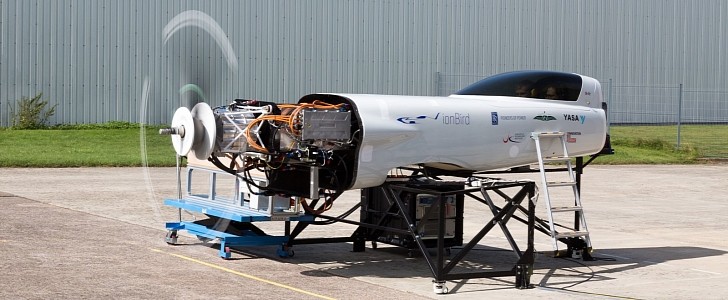The Chevrolet Corvette turned Genovation GXE is currently the fastest street-legal electric vehicle in the world, with a maximum speed of 211.8 mph (340.86 kph), achieved late last year on the Kennedy Space Center runway. Well, you would think that an electric aircraft would be quite faster than this... and it’s not. Instead, the record holder for this type of aircraft is the Extra 330LE, which topped out in 2017 at just 214 mph (342.86 mph).
Well, sensing there’s room for (major) improvement in this area, Rolls-Royce – not the BMW-owned luxury automaker, but the British aerospace, power systems and defense company - has come up with Project ACCEL. That would be short for “Accelerating the Electrification of Flight.”
The endeavor was announced last year, and the company has since managed to complete initial testing of the needed innovative technology that will ensure their aircraft will become the new world’s fastest all-electric plane. For now, there’s no actual flying bird to speak of, because Rolls has only created a test bed – a full-scale replica of the core components, dubbed “ionBird.”
And when they say core, they mean that we are currently dealing with just a crude skeleton – the engine, the fuselage, and cockpit. The rest of the components that make a plane airworthy – you know, things such as wings and tail – are missing in action. As such, Rolls’ electric record machine is not moving anywhere, not in the air and not even on the ground.
But the aerospace expert is confident things will change soon, with the maiden flight programmed for later this year and the actual attempt at the current all-electric flight world record scheduled for early 2021. While things such as wings and a tail are usually crucial, the company’s hopes are mostly banking on their newly developed electric powertrain.
That one is said to include a 500-hp electric motor as well as a battery “with enough energy to supply 250 homes.” The pack is said to encompass no less than 6,000 cells and engineers took all precautions in terms of safety, weight reduction and thermal protection to make sure the completed plane will hit its target speed of at least 300 mph (almost 483 kph).
The endeavor was announced last year, and the company has since managed to complete initial testing of the needed innovative technology that will ensure their aircraft will become the new world’s fastest all-electric plane. For now, there’s no actual flying bird to speak of, because Rolls has only created a test bed – a full-scale replica of the core components, dubbed “ionBird.”
And when they say core, they mean that we are currently dealing with just a crude skeleton – the engine, the fuselage, and cockpit. The rest of the components that make a plane airworthy – you know, things such as wings and tail – are missing in action. As such, Rolls’ electric record machine is not moving anywhere, not in the air and not even on the ground.
But the aerospace expert is confident things will change soon, with the maiden flight programmed for later this year and the actual attempt at the current all-electric flight world record scheduled for early 2021. While things such as wings and a tail are usually crucial, the company’s hopes are mostly banking on their newly developed electric powertrain.
That one is said to include a 500-hp electric motor as well as a battery “with enough energy to supply 250 homes.” The pack is said to encompass no less than 6,000 cells and engineers took all precautions in terms of safety, weight reduction and thermal protection to make sure the completed plane will hit its target speed of at least 300 mph (almost 483 kph).




















